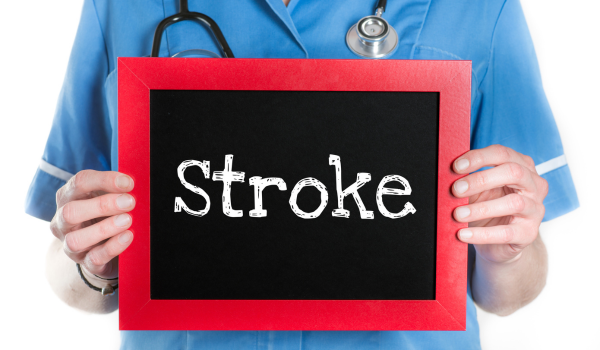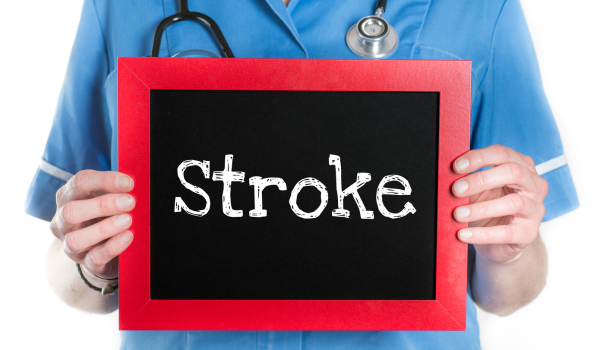.png)
Why stroke risk matters
Stroke remains one of the leading causes of death and long-term disability worldwide. Often striking without warning, it can leave lasting effects on physical function, cognition, and quality of life. The good news? Up to 80% of strokes are preventable. By understanding the risk factors—especially those that are modifiable—you can take proactive steps to reduce your chances of a stroke.
High blood pressure
High blood pressure, or hypertension, is the most significant risk factor for stroke. It puts constant strain on the walls of your arteries, making them more likely to rupture or become blocked—two primary causes of stroke.
-
Systolic pressure consistently above 130 mmHg greatly increases stroke risk.
-
Both ischemic (clot-based) and hemorrhagic (bleeding) strokes are linked to high blood pressure.
Managing blood pressure through lifestyle changes, medication, and regular monitoring is crucial to stroke prevention.
Diabetes
People with diabetes are at significantly higher risk for stroke. Elevated blood glucose damages blood vessels over time, leading to plaque buildup, arterial stiffness, and clot formation.
-
Type 2 diabetes is particularly linked to ischemic strokes.
-
Risk increases further when diabetes coexists with high blood pressure or high cholesterol.
Good glycemic control, healthy diet, and routine check-ups are vital in lowering stroke risk in diabetics.
Atrial fibrillation
Atrial fibrillation (AFib) is a type of irregular heartbeat that increases the risk of blood clots forming in the heart. These clots can travel to the brain and cause a stroke.
-
AFib increases stroke risk by up to five times.
-
It is especially dangerous in older adults.
Anticoagulants (blood thinners), such as warfarin or direct oral anticoagulants, can significantly reduce this risk when prescribed appropriately.
Smoking
Cigarette smoking damages blood vessels, thickens blood, and accelerates the development of plaque in the arteries—all of which increase stroke risk.
-
Smoking doubles your risk of ischemic stroke.
-
It also reduces oxygen in the blood, forcing the heart to work harder.
The benefits of quitting smoking start almost immediately and can greatly lower your risk over time.
Obesity
Excess weight strains the entire cardiovascular system. It contributes to conditions like hypertension, diabetes, and high cholesterol—all of which independently raise stroke risk.
-
A BMI over 30 is considered obese.
-
Abdominal fat is particularly associated with increased stroke likelihood.
Weight loss, even by 5–10%, can improve metabolic markers and reduce stroke risk substantially.
High cholesterol
Cholesterol buildup in arteries leads to atherosclerosis—a narrowing and hardening of blood vessels—which is a major cause of ischemic strokes.
-
High LDL (“bad” cholesterol) is especially concerning.
-
Low HDL (“good” cholesterol) may also increase risk.
Statins and dietary changes are effective in managing cholesterol and reducing plaque formation.
Sedentary lifestyle
Physical inactivity is a modifiable risk factor linked with obesity, hypertension, and insulin resistance. All contribute to stroke risk.
-
The WHO recommends at least 150 minutes of moderate exercise weekly.
-
Walking, swimming, or cycling can significantly improve vascular health.
Regular movement also supports mental health and reduces stress—a lesser-known stroke contributor.
Excessive alcohol intake
While light alcohol consumption may have some cardiovascular benefits, heavy drinking increases stroke risk, particularly hemorrhagic strokes.
-
Binge drinking raises blood pressure and disrupts heart rhythm.
-
Chronic alcohol use damages blood vessels and liver, further compounding risk.
Limit alcohol to no more than one drink per day for women and two for men, or eliminate it altogether for best results.
Sleep apnea
Obstructive sleep apnea (OSA) is a condition where breathing repeatedly stops during sleep. It can cause sudden drops in oxygen levels, straining the heart and brain.
-
Strongly associated with atrial fibrillation and hypertension.
-
Often undiagnosed, especially in overweight individuals.
CPAP therapy and weight management can reduce associated stroke risk significantly.
Family history
A family history of stroke or cardiovascular disease may increase your own risk, especially if relatives experienced stroke at a young age.
-
Genetics can affect blood pressure regulation, cholesterol levels, and clotting tendencies.
-
However, shared lifestyle factors (e.g., diet, smoking) also play a role.
Knowing your family history empowers you to monitor health markers more closely and act early.
Age and gender
Stroke risk increases with age, doubling every decade after 55. However, it can still occur in younger people, especially when multiple risk factors are present.
-
Men have a higher risk of stroke at younger ages.
-
Women have a higher lifetime risk due to longer life expectancy and stroke risks during pregnancy or with hormone therapy.
No matter your age, early prevention is key.
Ethnicity
Some ethnic groups are at a higher risk for stroke due to genetic predisposition and socioeconomic disparities.
-
African Americans have nearly double the stroke risk compared to Caucasians.
-
Hispanics, Native Americans, and Asian Americans also face elevated risks.
Access to care, education, and prevention programs is critical in addressing these disparities.
Previous stroke or TIA
Having had a stroke or transient ischemic attack (TIA, or “mini-stroke”) is a strong predictor of future strokes.
-
About one in four stroke survivors will have another stroke.
-
TIAs are often ignored, but they are red flags that require urgent attention.
Ongoing medical management and lifestyle changes can reduce recurrence risk by over 80%.
Poor diet
A diet high in salt, trans fats, processed foods, and sugar contributes to stroke-related conditions such as hypertension and atherosclerosis.
-
The DASH and Mediterranean diets are proven to reduce stroke risk.
-
Emphasize vegetables, fruits, lean protein, healthy fats, and whole grains.
Even small dietary improvements can make a major difference over time.
Chronic stress
Long-term stress can elevate blood pressure, increase inflammation, and contribute to unhealthy coping behaviors like overeating or smoking.
-
Cortisol, the stress hormone, affects vascular function.
-
Mental health issues like depression and anxiety also correlate with higher stroke risk.
Stress reduction techniques such as mindfulness, yoga, therapy, and exercise can lower this hidden risk.
Hormonal factors
Women face unique stroke risks related to hormone use and life stages.
-
Oral contraceptives, especially in smokers over 35, can increase clot risk.
-
Hormone replacement therapy (HRT) may raise the risk of ischemic stroke.
-
Pregnancy-related conditions like preeclampsia or gestational diabetes are also warning signs.
Discuss risks with your doctor when considering hormonal treatments.
Illegal drug use
Recreational drugs such as cocaine, methamphetamine, and ecstasy can cause sudden strokes, even in young individuals.
-
These drugs increase blood pressure and cause vasospasms (sudden narrowing of blood vessels).
-
Risk is especially high with repeated or high-dose use.
Avoiding substance abuse is a critical stroke prevention strategy, particularly in younger adults.
Air pollution and environmental factors
Recent studies suggest a link between air pollution and stroke, especially in urban areas with high levels of particulate matter.
-
Pollutants can increase inflammation and oxidative stress.
-
Long-term exposure may lead to chronic vascular damage.
Using air purifiers, avoiding outdoor activity during peak pollution, and advocating for cleaner environments can help.
Lack of routine checkups
One of the biggest dangers is not knowing you’re at risk. Many conditions that raise stroke risk—like high blood pressure or atrial fibrillation—can go undetected without regular screenings.
-
Annual physicals, cholesterol tests, and blood pressure monitoring are vital.
-
Screening tools like ECGs or sleep studies may also be appropriate for some.
Prevention starts with awareness.
Conclusion
Stroke doesn’t happen by chance. It is often the result of years of underlying conditions and lifestyle habits. The more risk factors you have, the greater your chances of experiencing a stroke—but the reverse is also true: the more risks you control, the lower your chances become.
Start by focusing on the risk factors you can change: blood pressure, diet, exercise, smoking, and alcohol use. Work with your healthcare provider to manage medical conditions like diabetes or AFib. And don’t ignore family history—use it as motivation to stay vigilant.
Your health is in your hands.
.png)
.png)
.png)
.png)
.png)
.png)
.png)
.png)
.png)
.png)
.png)
.png)
.png)
.png)








